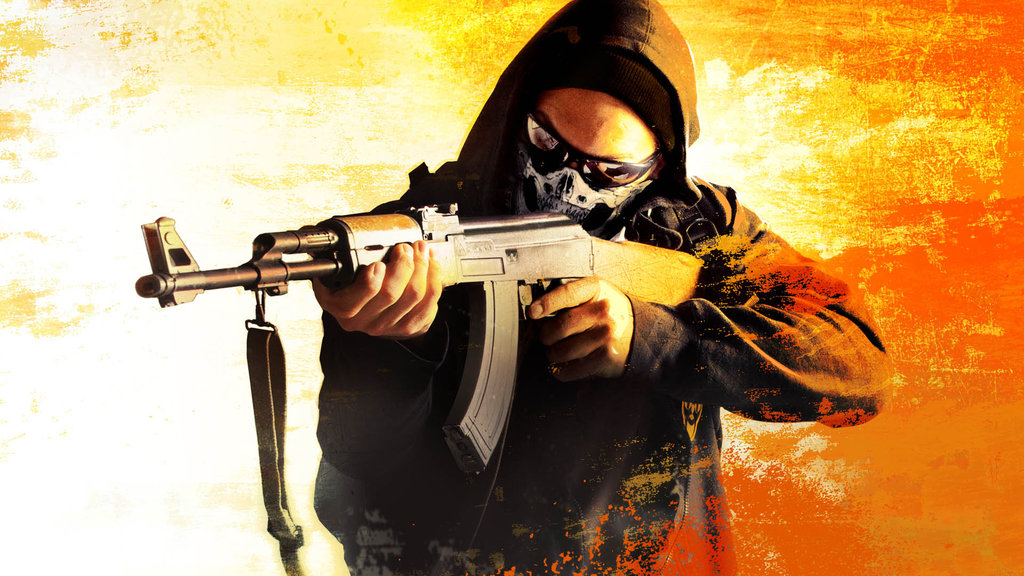Learn the fundamentals of CS:GO in these videos

We write about FPSes each week in Triggernometry, a mixture of tips, design criticism, and a celebration of virtual marksmanship.
When I launch CS:GO and my eyes wander over my ever-growing pile of Hours Played, a thought often eats away at me. I’ve put hundreds of hours into Terrorisming and Counter-Terrorisming—thousands if you include Source and 1.6. I spend more time playing CS:GO than I do interacting with my loved ones. How the hell am I not a Counter-Strike master yet?
The truth is that getting better at Counter-Strike by only playing Counter-Strike can be a really slow, ineffective way to get better at Counter-Strike. Especially if you aren’t taking the time to watch and analyze your own matches, it’s possible to spend months or years making the same mistakes.
Fundamental parts of Counter-Strike are opaque. Which surfaces can and can’t be penetrated, and by which weapons? How do flashes work? Can a player that loses the first two rounds of a match afford an AWP? You have to be willing to do some homework and take in raw facts about the game, information that drives deeper realizations about how it can be played.
For me, that learning has opened up a better appreciation of CS. When I embraced it a long time ago, the game went from being about motor skills to being a chess match about money and clock management, scouting, feints, morale, reading audio cues, and play calling.
That said, there’s an infinite amount of information you can lay eyes on to study. Below, I’ve gathered a set of recommended videos for players who want to gain the confidence to play competitively or get over some of their existing matchmaking hurdles.
Rifle spray patterns, techniques
Rifles are the bread and butter of Counter-Strike at all levels, and understanding how they work (and their key differences) is equivalent to a basketball player working on their free-throws. CS:GO pro adreN is really direct in his advice (“Never crouch, it has no effect on your recoil”; “You should never start off with a spray at this range”) and talks about how to manage shooting while moving.
Money management
The second of three videos in a series about CS:GO’s economy, TheWarOwl digs into the mentality around buying and saving in CS in the early stages of a match, when adhering to certain guidelines is especially important. I like the way he compares the practice of predicting your opponent’s economy to counting cards in blackjack.
Keep up to date with the most important stories and the best deals, as picked by the PC Gamer team.
Chokepoint timings
Counter-Strike is carefully tuned so that CTs and Ts have to rush out of their spawn points in order to establish map control. Playing with the timings (by, say, throwing a grenade at a certain spot to stop a rush) at these meeting points between is central to succeeding at CS.
Mouse sensitivity
“The advice I give to everyone is to make your sensitivity as low as possible while still being able to turn 180 degrees consistently.”
Flashbangs
For my money, flashbangs are the least-practiced, most misunderstood aspect of CS. So many players simply go through the motions of buying and carelessly throwing flashbangs without knowing whether (or how) effective they are against an opponent. My video from earlier this year touches on two basic techniques for flashbanging and breaks down the geometric rules that determine whether someone gets blinded by one.

Evan's a hardcore FPS enthusiast who joined PC Gamer in 2008. After an era spent publishing reviews, news, and cover features, he now oversees editorial operations for PC Gamer worldwide, including setting policy, training, and editing stories written by the wider team. His most-played FPSes are CS:GO, Team Fortress 2, Team Fortress Classic, Rainbow Six Siege, and Arma 2. His first multiplayer FPS was Quake 2, played on serial LAN in his uncle's basement, the ideal conditions for instilling a lifelong fondness for fragging. Evan also leads production of the PC Gaming Show, the annual E3 showcase event dedicated to PC gaming.

